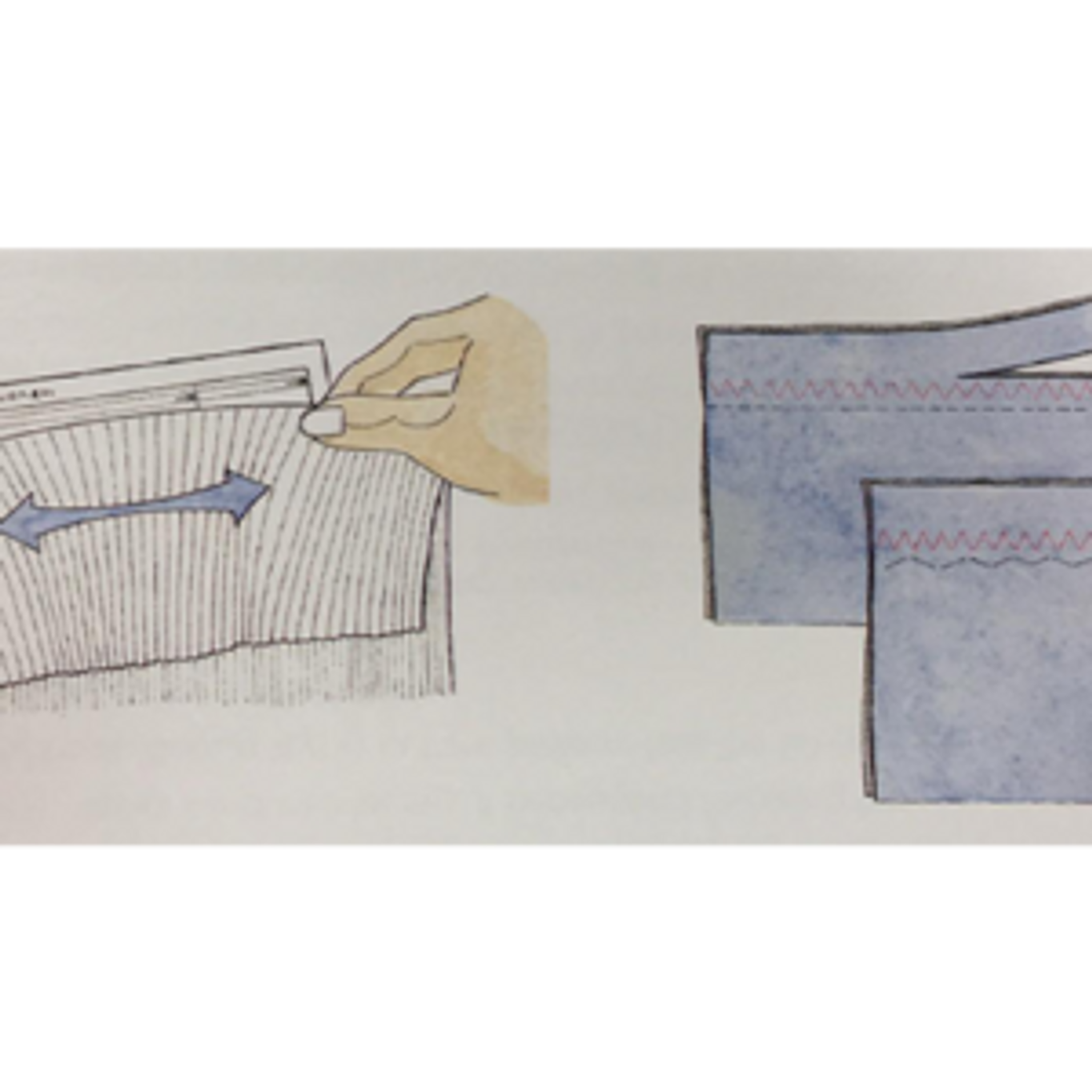
The term "stretch fabrics" refers to stretch-woven fabrics, single knits, some double knits, and bias-cut fabrics. The seams in these elastic fabrics need to stretch with the fabric, or they may pucker and the stitches might break, so they need to be sewn with stitches that stretch too. If you must sew stretch fabrics with a straight stitch, hold the fabric taut - don't pull it. Stop occasionally and with the needle in the fabric, raise the presser foot to relax the fabric. Sew a second line of stitching 1/8" (3mm) from the first.
Narrow zigzag: Every machine can sew this style of stitch. Set the stitch width to a very narrow setting and the stitch length equal to the stitch width.
Straight stretch stitch: This specialty stitch looks like three parallel rows of straight stitches. To create it, the machine stitches back and forth in a straight line.
Overedge stitch: This specialty stitch locks over the edge of the fabric so it stitches and finishes a seam in one pass.
Twin-needle stitch: This specialty stitch requires a twin needle. The right side of the fabric has two parallel rows of stitching. On the wrong side, the bobbin thread follows a zigzag pattern.
- Prewash or dry-clean the fabric, following the care instructions.
- Gently press out any creases.
- Lay out the pattern on the fabric so the most stretch around the body. Follow the "with nap" layout.
- if both sides of the fabric look the same, mark one side f each cut piece as the right side with chalk or small piece of tape.
- Stitch with a ballpoint needle, polyester thread and a stretch stitch.
- Press carefully - don't slide the iron - to avoid stretching the fabric.
- To stabilize but not restrict the knit, apply fusible knit interfacing to collars, cuffs, pockets, plackets and facings.
Commercial patterns that call for knit fabrics usually have a stretch gauge on the back. To test a knit, fold it crosswise and hold it up to the gauge. If it stretches to the indicated point, the fabric has enough stretch for that pattern.
If seam allowances tend to curl, sew a second row of stitching and trim the seam allowance close to the second row.
When stitching buttonholes in a stretch fabric, stitch in the direction of the least stretch. Stabilize the wrong side of the fabric first with fusible interfacing.
